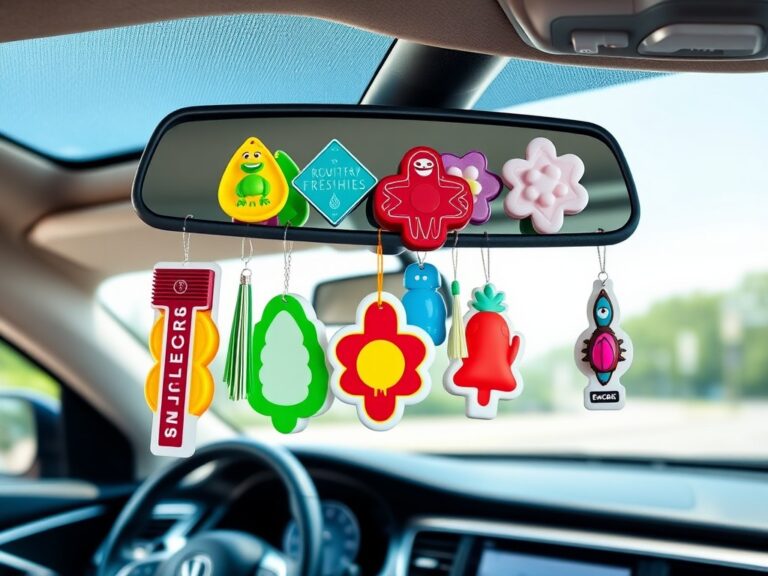AMC Gremlin Car: A Look at Its History, Specs, and Cult Following
The AMC Gremlin car is one of the most distinctive and polarizing vehicles ever produced in the United States. Launched in 1970 by the American Motors Corporation (AMC), the Gremlin was a product of its time—a small, economical car designed to compete in the growing compact car market against foreign manufacturers. Despite its unconventional design and mixed reviews, the Gremlin has developed a cult following over the years. This article delves into the history of the AMC Gremlin, its specifications, and the reasons why this quirky car continues to captivate enthusiasts and collectors alike.
The Origins of the AMC Gremlin: Born Out of Necessity
The story of the AMC Gremlin begins in the late 1960s, when the American automotive market was facing a seismic shift. Foreign car manufacturers, particularly from Japan and Europe, were gaining ground with their compact and fuel-efficient vehicles. The American public was beginning to demand smaller cars, and the Big Three automakers—Ford, GM, and Chrysler—were slow to respond to this changing landscape. However, AMC, a smaller company always known for its innovation and risk-taking, saw an opportunity to tap into this growing demand.
AMC’s leadership, headed by CEO Roy Chapin Jr., tasked the company’s engineers with creating a small, affordable car that could be brought to market quickly. The result was the Gremlin, a car that would be introduced on April 1, 1970. Designed by AMC’s renowned stylist Richard Teague, the Gremlin was an unorthodox design. It essentially took the front half of the AMC Hornet and gave it a truncated rear end, resulting in a hatchback that stood out starkly against the more conventional cars of the time. The Gremlin’s peculiar look quickly became its most defining characteristic, drawing both admiration and criticism from the public.
Unconventional Design: The Gremlin’s Aesthetic Appeal
One of the most polarizing aspects of the AMC Gremlin is its design. The Gremlin’s shape was highly unusual compared to the sleek, rounded cars of the era. It had a long hood and a stubby, cut-off rear end, giving it a profile that looked almost unfinished. Teague’s bold design was intentional, as AMC wanted to create a car that was instantly recognizable. The Gremlin was the first mass-produced American car with a hatchback design, a feature that would become popular in the years to come.
While some found the Gremlin’s design awkward and unattractive, others appreciated its quirkiness. The distinctive “hatchback” rear, with its nearly vertical cut-off, allowed for better cargo space, and the car’s compact size made it easy to maneuver in urban settings. The Gremlin came in both two-seater and four-seater versions, offering a level of versatility that was rare in the American automotive market at the time. The interior was basic, but functional, designed to be affordable and practical rather than luxurious.
Under the Hood: The Gremlin’s Engine Options and Performance
At launch, the AMC Gremlin offered a variety of engine options, ranging from modest to surprisingly powerful for such a small car. The base model came with a 2.0-liter inline-four engine, borrowed from AMC’s partnership with European carmaker Borg-Warner. However, the engine that most buyers opted for was AMC’s homegrown 3.3-liter inline-six, which provided more power and durability. This engine was well-suited for the Gremlin’s light body, offering decent acceleration and reliability for everyday driving.
In 1972, AMC introduced a 5.0-liter (304-cubic-inch) V8 engine option for the Gremlin, making it one of the smallest cars available with such a large engine. This performance upgrade turned the Gremlin into something of a sleeper hot rod, capable of delivering impressive speed for its size. The V8 Gremlin could go from 0 to 60 mph in under 8 seconds, a figure that was quite competitive for the time, especially for a car in the compact segment. Despite its small stature, the Gremlin’s performance capabilities earned it respect from muscle car enthusiasts.
However, with the introduction of new federal emissions regulations in the mid-1970s, performance across the automotive industry began to wane. The Gremlin was no exception, as its engines were gradually detuned to meet stricter emissions standards, resulting in slower acceleration and reduced power. Despite these limitations, the Gremlin remained a practical and economical choice for many buyers.
Fuel Efficiency and the Gremlin’s Role in the 1970s Gas Crisis
The 1970s was a decade marked by a major shift in American attitudes toward fuel consumption, largely driven by the oil crisis of 1973. As gasoline prices soared and long lines formed at gas stations, consumers began to prioritize fuel efficiency in a way they hadn’t before. The Gremlin, with its small size and relatively lightweight design, was well-positioned to benefit from this trend.
The Gremlin’s base model, with its smaller engines, offered solid fuel economy for the time, averaging around 25 miles per gallon. While not as fuel-efficient as some of the smaller Japanese imports, like the Toyota Corolla or Honda Civic, the Gremlin represented a more economical option for Americans who wanted to buy domestic. Its ability to run on regular, leaded gasoline made it an attractive choice during a period of high fuel prices and economic uncertainty.
Competition in the Compact Car Market: The Gremlin vs. Its Rivals
The AMC Gremlin was not alone in the compact car market of the 1970s. It faced stiff competition from both domestic and foreign automakers. Among its primary rivals were the Ford Pinto and Chevrolet Vega, two other American cars aimed at the same segment. Both the Pinto and Vega were similar in size and price, but each had its own set of strengths and weaknesses.
The Ford Pinto, for example, was criticized for safety issues, particularly its rear-mounted gas tank, which was prone to rupturing in rear-end collisions. This controversy ultimately tarnished the Pinto’s reputation. The Chevrolet Vega, on the other hand, suffered from reliability issues, with many owners reporting engine problems after only a few years of use.
The Gremlin, by comparison, was considered more reliable and durable. While it wasn’t without its flaws—early models were criticized for being noisy and uncomfortable—it avoided the major safety scandals that plagued its competitors. Over time, the Gremlin would develop a reputation for being a tough, dependable car, especially when equipped with AMC’s inline-six engine.
The Gremlin X: A Sportier Version of the Classic Compact
In an effort to broaden the Gremlin’s appeal, AMC introduced a sportier version of the car known as the Gremlin X. Released in 1971, the Gremlin X featured sportier styling elements, including racing stripes, a blacked-out grille, and a rear spoiler. Buyers could also opt for the V8 engine, making the Gremlin X one of the most powerful subcompact cars on the market at the time.
The Gremlin X was marketed as a fun, affordable car for younger buyers, and it succeeded in attracting a younger demographic. With its combination of quirky looks and surprising performance, the Gremlin X became a favorite among car enthusiasts who were looking for something a little different from the muscle cars of the era. Today, the Gremlin X is one of the most sought-after versions of the car among collectors, with restored examples commanding high prices at auctions.
The End of the Gremlin: Production Ceases in 1978
After nearly a decade in production, the AMC Gremlin was discontinued in 1978. By this time, the automotive landscape had changed significantly. New compact cars, such as the Honda Accord and Volkswagen Rabbit, were offering better fuel efficiency, improved technology, and more refined designs. AMC, facing financial difficulties, decided to replace the Gremlin with the Spirit, a more modern and stylish hatchback that would carry the company’s compact car lineup into the 1980s.
Despite its discontinuation, the Gremlin continued to have a loyal fan base. Many Gremlins remained on the road well into the 1980s, a testament to their durability and practicality. Over time, the Gremlin’s oddball design and unique place in automotive history earned it a cult following, with collectors and enthusiasts seeking out well-preserved examples of the car.
Why the AMC Gremlin Remains a Cult Favorite
So, what is it about the AMC Gremlin that has earned it a place in the hearts of car enthusiasts? For many, the Gremlin’s appeal lies in its uniqueness. At a time when most cars looked relatively similar, the Gremlin stood out as something different, something daring. Its unusual design, combined with its practicality and performance potential, gave it a distinct personality that many modern cars lack.
The Gremlin’s affordability also makes it an attractive option for collectors. Unlike some classic cars, which can be prohibitively expensive to buy and restore, the Gremlin remains relatively affordable, with many examples available for a reasonable price. This accessibility has helped the Gremlin maintain a strong following among car enthusiasts who are looking for a fun, unique car that doesn’t break the bank.
The AMC Gremlin in Pop Culture
In addition to its place in automotive history, the AMC Gremlin has also found a lasting legacy in popular culture. The car has appeared in numerous films and TV shows, often as a symbol of the 1970s or as a quirky character vehicle. Perhaps most famously, the Gremlin was featured in the 1992 film Wayne’s World, where it served as the main character’s ride. The car’s appearance in the film helped introduce the Gremlin to a new generation of fans.
The Gremlin has also been a popular subject for toy manufacturers and model car makers, with many die-cast models and plastic kits produced over the years. Its distinctive shape and status as a cult classic make it a favorite among collectors of automotive memorabilia.
Conclusion: The Lasting Legacy of the AMC Gremlin
The AMC Gremlin is more than just a car—it’s a symbol of an era, a testament to American innovation, and a quirky classic that continues to captivate car enthusiasts around the world. While it may not have been the most successful car in terms of sales or critical acclaim, the Gremlin’s enduring popularity is a reminder that sometimes, being different is the key to lasting fame.
Today, the Gremlin stands as a beloved oddball in automotive history, a car that defied convention and left an indelible mark on the industry. Whether you love it or hate it, there’s no denying that the AMC Gremlin is one of the most memorable cars ever made. Its place as a cult favorite is well-deserved, and its legacy will likely continue to grow as more people discover the charm of this unique vehicle.
Read Also Our This Post: Find Car Dealerships with Spanish Staff for a Hassle-Free Buying Experience

Kamran Khatri is a versatile writer and editor at ExpressZone.co.uk, bringing fresh perspectives and insightful commentary across a wide range of topics. With a passion for exploring diverse subjects—from technology, business, and finance to lifestyle, travel, and the arts—Kamran aims to inform, inspire, and engage readers through well-researched articles and thought-provoking content.
His work spans multiple categories including health, education, pets, entertainment, real estate, and sustainability, reflecting his commitment to delivering knowledge that connects with everyday life. Whether breaking down the latest trends, sharing practical tips, or highlighting cultural insights, Kamran’s writing combines clarity with creativity.
When he’s not crafting stories for ExpressZone.co.uk, Kamran enjoys keeping up with global developments, exploring innovative ideas, and connecting with readers who share his curiosity about the world.







